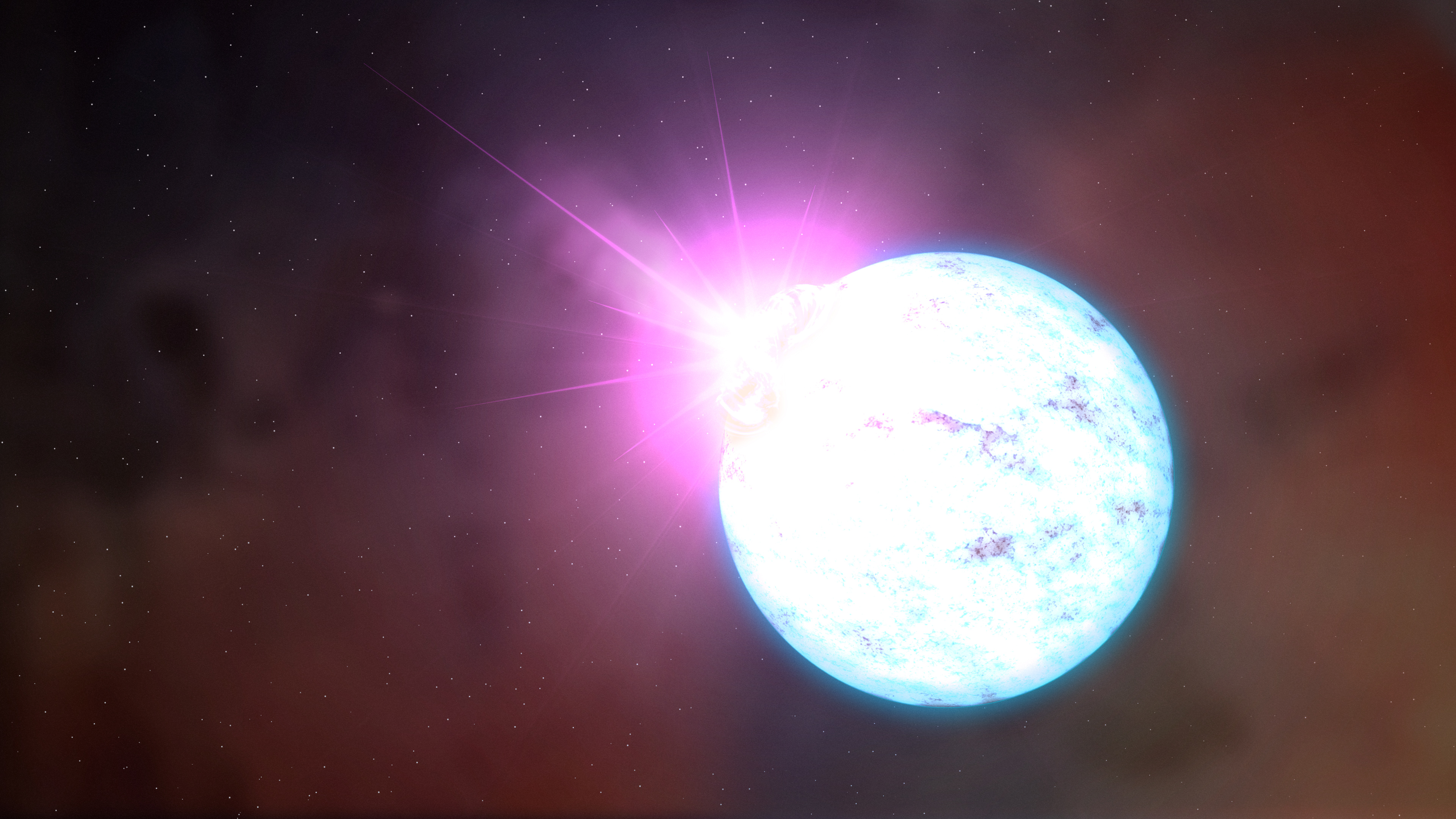|
Neutron stars are very dense remnants of the previous stars. When a star is at the end of its “life,” when all the fuel is iron or heavier elements, the gravitational force of the star becomes stronger than the fusion force pushing out. All the mass is brought to the core of the star, making the star more dense, and due to conservation of energy and conservation of angular momentum the star spins at a significantly faster rate.
|

https://www.nasa.gov/mission_pages/swift/bursts/new-phenom.html
This is a neutron star spitting out a burst of
energy as it slows down.
|